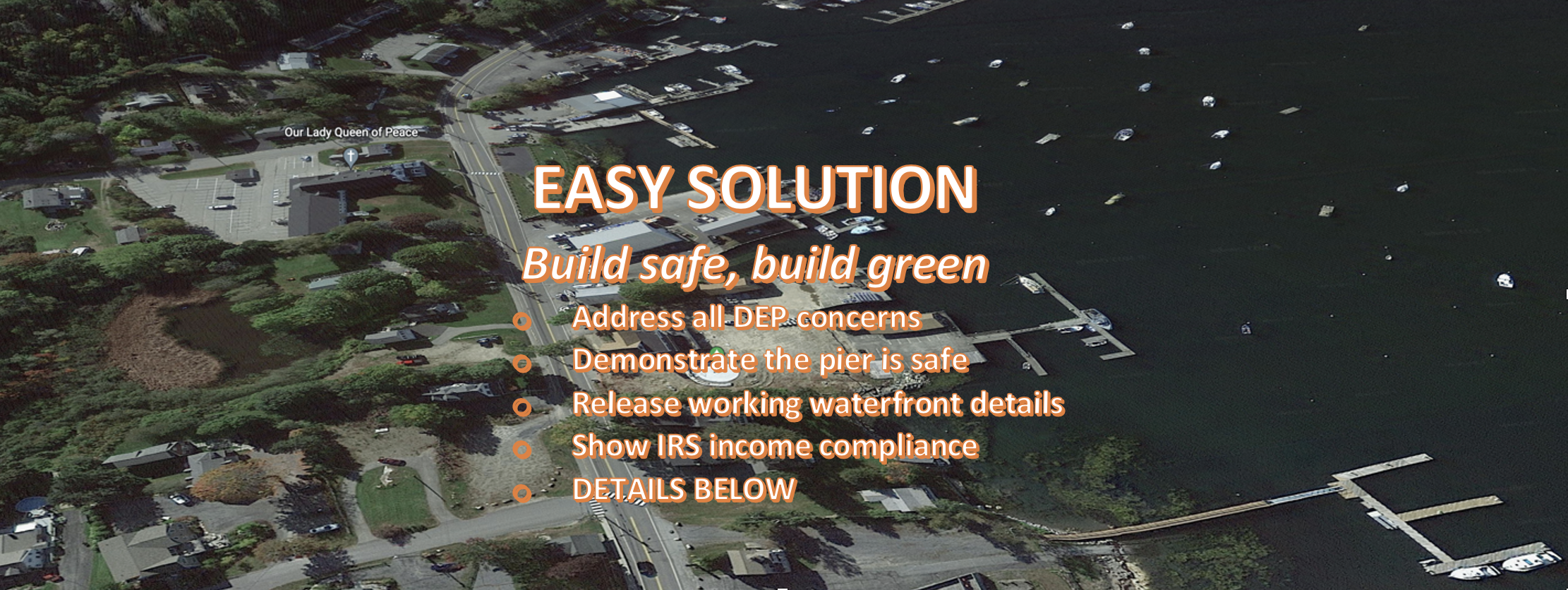
1. Address all DEP concerns
Impervious surfaces must not exceed 20% of the entire property --- the same standard all other town residents must meet.
Handle graywater from the “splashpad” responsibly. Obtain proper permits for this wastewater --- contaminated by human use --- before it’s released into the harbor.
Observe all other shoreland zoning standards upon which DEP insists. (The entire development sits within the shoreland zone.)
2. Demonstrate the pier is safe
Turn over the existing engineering report to town regulatory officials and provide plans to address any concerns.
If the report concludes the pier is structurally unsafe, update the Prock cost estimate for replacing the pier so that this significant development cost is no longer a secret to donors and taxpayers.
3. Working waterfront details
A prominent feature of both BBHWP’s fundraising materials and its mission statement supplied to the IRS is the phrase “protect working waterfront.” The public, taxpayers and donors understand “working waterfront” as activities or amenities that directly support the area’s lobstering and commercial fishing economy. This feature can’t be mere lip service --- now’s the time to spell out those plans in detail.
4. Show IRS income compliance
BBHWP has claimed to the IRS that it’s an organization that normally receives more than 33 1/3% of its support from contributions, membership fees and gross receipts from activities. In its 4th straight year of fundraising, it is time to release data that proves compliance.
BBHWP has claimed to the IRS that it’s an organization that does not generate more than 33 1/3% of its income from investment of donated funds. In its 4th straight year of fundraising, it is time to release data that proves compliance.